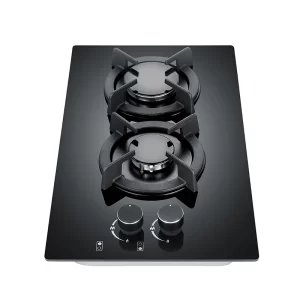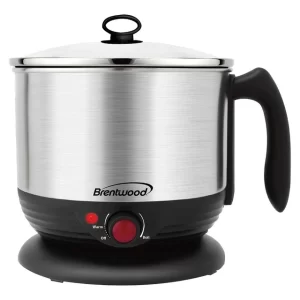What is the difference between different brands of appliances?
Introduction:
When it comes to purchasing appliances for your home, there are numerous brands to choose from. Each brand has its own unique characteristics, features, and reputation. Understanding the differences between these brands is crucial in making an informed decision that aligns with your needs and preferences. In this article, we will explore the key differences between different brands of appliances, focusing on factors such as quality, design, innovation, customer service, and price. By understanding these differences, you can select a brand that meets your specific requirements and ensures a satisfactory ownership experience.

What is the difference between different brands of appliances?
Quality and Reliability:
a. High-End Brands: High-end appliance brands such as Sub-Zero/Wolf, Viking, and Miele are known for their exceptional quality and reliability. These brands often use premium materials, advanced manufacturing techniques, and stringent quality control processes to ensure a long-lasting and durable product. High-end brands may have a reputation for superior performance and longevity.
b. Mid-Range Brands: Mid-range brands like Samsung, LG, and Bosch offer a balance between quality and affordability. While their products may not have the same level of luxury or exclusivity as high-end brands, they still prioritize durability and reliability. These brands often invest in research and development to improve the quality of their appliances.
c. Budget-Friendly Brands: Budget-friendly brands like Haier, Hisense, and Frigidaire may offer more affordable appliances but may have a slightly lower reputation for quality and reliability. However, advancements in manufacturing and quality control have resulted in budget-friendly brands producing more reliable and durable appliances in recent years.
Design and Style:
a. Contemporary and Sleek: Brands like Samsung, LG, and Bosch are known for their contemporary and sleek designs. These brands prioritize modern aesthetics, clean lines, and minimalist features. Their appliances often feature stainless steel finishes, sleek control panels, and ergonomic handles that can enhance the overall appearance of a kitchen.
b. Traditional and Classic: Other brands like Whirlpool, Maytag, and GE Appliances have a more traditional and classic design approach. They offer appliances with timeless designs that can blend seamlessly with various kitchen styles. These brands often focus on functionality and practicality while incorporating subtle design elements.
c. Luxury and Customization: High-end brands such as Sub-Zero/Wolf and Viking provide customers with the option to personalize and customize their appliances. These brands offer a wide range of premium finishes and materials, allowing homeowners to create a truly luxurious and unique kitchen aesthetic.
Innovation and Technology:
a. Smart Features: Brands like Samsung and LG are at the forefront of appliance innovation, offering smart features and connectivity. These brands incorporate technologies that allow users to control and monitor their appliances remotely through mobile apps. Smart features can include voice control, recipe suggestions, energy monitoring, and integration with smart home systems.
b. Energy Efficiency: Many brands, including Whirlpool, Bosch, and Maytag, focus on energy efficiency in their appliances. These brands prioritize reducing energy consumption without compromising performance. Energy-efficient features can include improved insulation, LED lighting, and advanced cooling technologies that minimize energy usage.
c. Advanced Functions: High-end brands like Miele, Sub-Zero/Wolf, and Viking often introduce advanced functions and technologies into their appliances. This can include precision cooking modes, advanced moisture control, specialized compartments, and intuitive user interfaces that enhance the cooking and food preservation experience.
Customer Service and Support:
a. Reputation for Service: Some brands, such as Miele and Sub-Zero/Wolf, have a strong reputation for excellent customer service and support. These brands prioritize customer satisfaction and often offer extended warranties, prompt repairs, and helpful customer support teams.
b. Availability of Parts: Another aspect of customer service is the availability of replacement parts. Brands that ensure the availability of parts even after several years of ownership make it easier for customers to repair and maintain their appliances.
Pricing and Affordability:
a. High-End Luxury: High-end luxury brands like Sub-Zero/Wolf and Viking often come with a higher price tag. These brands offer top-of-the-line appliances with luxurious finishes, superior performance, and advanced features. The premium pricing reflects the exclusivity and craftsmanship associated with these brands.
b. Mid-Range Value: Mid-range brands like Samsung, LG, Whirlpool, and Bosch offer a balance between quality and affordability. These brands provide reliable appliances with a range of features at a more accessible price point. The value they offer makes them popular choices for many homeowners.
c. Budget-Friendly Options: Budget-friendly brands like Haier, Hisense, and Frigidaire cater to those seeking more affordable options. These brands focus on providing basic functionality and reliable performance at an entry-level price.
Conclusion:
The differences between brands of appliances can vary significantly in terms of quality, design, innovation, customer service, and pricing. High-end brands prioritize luxury, superior performance, and customization. Mid-range brands strike a balance between quality and affordability, often incorporating sleek designs and innovative features. Budget-friendly brands focus on providing reliable appliances at a more accessible price point. Understanding these differences enables you to select a brand that aligns with your specific requirements and preferences. Consider factors such as quality, design aesthetics, technological innovation, customer service, and budget when making your decision. By conducting thorough research and considering these factors, you can choose a brand that offers the right combination of features, reliability, and value for your kitchen appliance needs.

